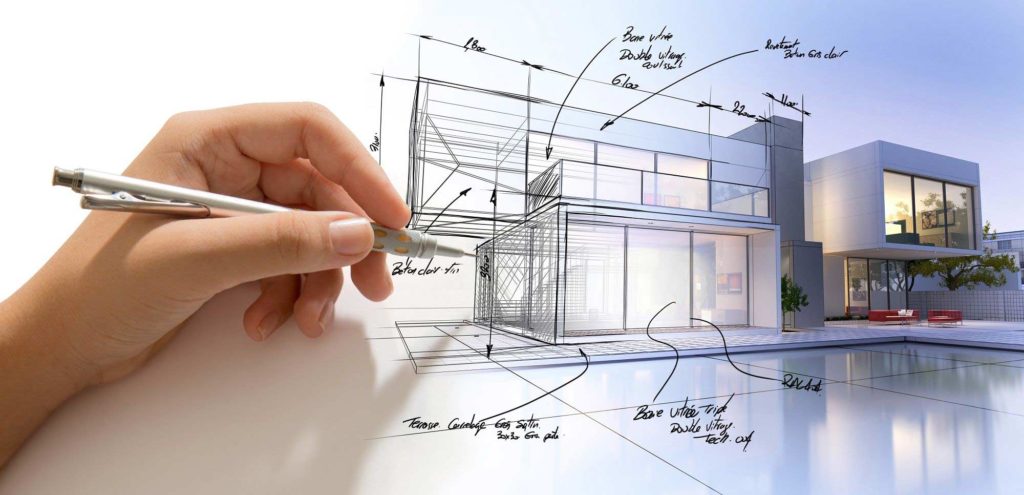Comprehending the Diverse Profession Paths Available for Aspiring Architect
As a hopeful Architect, you have a world of profession courses waiting for you. Whether you're drawn to conventional architecture or the nuances of sustainable style, there's a niche that aligns with your rate of interests.
Standard Style: Designing Buildings and Frameworks
Standard style concentrates on developing structures and structures that mix capability with aesthetic appeal. As you explore this area, you'll appreciate the elaborate balance between type and objective. You'll find out to attract ideas from historic styles, integrating components like symmetry, products, and workmanship. Your styles can mirror cultural heritage, showcasing regional traditions while satisfying contemporary requirements.
You'll develop skills in preparing, model-making, and website analysis, enabling you to picture and interact your concepts properly. Involving with clients, you'll require to comprehend their vision and equate it into possible layouts.
Additionally, building codes and sustainability practices are essential in your job, guaranteeing your frameworks are risk-free and eco-friendly. As you expand in your occupation, you'll find possibilities in domestic, business, or even reconstruction tasks, each offering one-of-a-kind challenges. Accepting traditional design leads the way for a satisfying career that admires the past while forming the future.
Urban Preparation: Shaping Neighborhoods and Public Spaces
As a hopeful Architect, you can play a necessary function as an urban coordinator, transforming just how neighborhoods operate and engage. By using community involvement techniques, you'll guarantee that citizens have a voice in forming their atmosphere. And also, integrating lasting style principles will certainly assist develop spaces that not only meet today's needs yet likewise shield the future.
Role of Urban Planners
While lots of might think about architects as the single enthusiasts behind structures, metropolitan planners play a necessary role in shaping the wider landscape of areas and public areas. They evaluate land usage, zoning regulations, and community requires to create sustainable environments that improve lifestyle. By teaming up with various stakeholders, you'll assist make parks, transportation systems, and suburbs that advertise social communication and availability. Urban coordinators likewise focus on ecological considerations, ensuring that advancements incorporate green spaces and assistance biodiversity. Your competence in spatial layout and neighborhood dynamics permits you to envision future growth while maintaining social heritage. In this vital function, you'll straight affect just how individuals experience their environments, making every job a chance for positive modification.
Community Engagement Strategies
Effective community interaction methods are vital for metropolitan organizers to guarantee that the voices of locals are heard and valued in the planning process. To promote meaningful dialogue, you should prioritize open discussion forums and workshops where area participants can express their ideas and worries. By actively incorporating and paying attention responses, you'll produce areas that mirror the community's needs, inevitably leading to even more sustainable and effective urban atmospheres.
Sustainable Style Principles
When creating city spaces, incorporating sustainable design principles is important for developing settings that thrive both environmentally and socially. You should start by concentrating on power efficiency, using materials that minimize waste and promote recycling. Think about integrating environment-friendly spaces, like gardens and parks, to enhance biodiversity and boost air quality. Promoting walkability and public transportation can decrease reliance on cars and trucks, promoting a healthier area.
Designing with water preservation in mind is likewise crucial-- think of rainfall yards and absorptive surfaces to take care of stormwater. Involving community members throughout the preparation process guarantees that the rooms you produce fulfill their needs and urge social communication. By accepting these principles, you'll add to vivid, sustainable city landscapes that benefit every person.

Landscape Design: Producing Sustainable Outdoor Environments
As you discover landscape design, you'll find important layout principles that create functional and beautiful outdoor spaces. Lasting techniques play a crucial role in making sure these atmospheres prosper while lessening ecological effect. And also, you'll locate a variety of career possibilities that allow you to make an actual distinction in how people connect with nature.
Layout Principles in Landscape
Comprehending style principles in landscape style is vital for creating lasting exterior atmospheres that balance with nature. You'll require to consider elements like balance, range, and proportion to guarantee your styles really feel cohesive and inviting. Including indigenous plants not only enhances biodiversity however additionally lowers water usage, making your landscape resilient. Think of the flow of area and exactly how individuals communicate with it; pathways and seating areas need to invite expedition and relaxation. Furthermore, focus on seasonal adjustments, designing with materials that match the surroundings year-round (Architect). By prioritizing sustainability and visual appeals, you can produce outdoor spaces that enhance the area and advertise health. Embracing these principles will set a solid foundation for your profession in landscape design.
Lasting Practices Introduction
Sustainable methods in landscape style not only concentrate on visual appeals but also focus on environmental health and wellness and resource preservation. By incorporating indigenous plants, you enhance biodiversity and lower the requirement for chemical fertilizers and pesticides. Carrying out reliable watering systems helps preserve water and reduces overflow, securing nearby ecosystems. You can create rooms that promote dirt health, such as practicing and utilizing organic materials permaculture principles. Furthermore, incorporating green infrastructure, like rainfall gardens and permeable pavements, aids in stormwater management and reduces urban warmth. You add to a healthier earth and supply spaces that promote neighborhood link when you produce exterior atmospheres with sustainability in mind. Ultimately, these methods ensure your styles profit both people and the setting for years ahead.
Profession Opportunities Exploration
With a solid structure in sustainable practices, landscape design offers a selection of profession paths that permit you to make a purposeful impact on the environment. Urban organizers usually team up with landscape engineers to develop environment-friendly areas in urban settings, boosting city livability. If you're enthusiastic about education and learning, consider ending up being a landscape architecture instructor, inspiring future generations.
Lasting Layout: Concentrating on Eco-Friendly Practices
As you explore your profession in style, accepting environment-friendly practices can set you apart in an affordable area. Sustainable layout concentrates on producing structures that lessen environmental impact while enhancing owner wellness. By including eco-friendly materials, energy-efficient systems, and lasting structure techniques, you'll add to a greener read this article future.
Begin by getting understanding of eco-friendly qualifications like LEED or BREEAM, which can boost your credentials. Think about how all-natural light, air flow, and thermal effectiveness can enhance style. Team up with engineers and ecological consultants to introduce options that reduce waste and preserve sources.
Do not forget the significance of area involvement-- interesting regional stakeholders can influence designs that integrate with the atmosphere. As clients increasingly prioritize sustainability, your experience in green techniques will not just draw in projects but likewise satisfy your passion for responsible design. Accept this vital element of the career, and watch your occupation grow.
Historical Preservation: Protecting and Recovering Social Heritage
While you start on your architectural journey, consider the vital function of historical preservation in keeping our social heritage. This field concentrates on the security and remediation of significant buildings, websites, and frameworks that tell the stories of our past. By participating in historical conservation, you'll help safeguard the building tradition that shapes neighborhood identity.
As a historic preservation Architect, you'll analyze historic significance and examine the condition of frameworks. You'll work very closely with chroniclers and preservationists to ensure genuine reconstruction techniques are utilized. This profession path allows you to blend creative thinking with research study, allowing you to design services that respect original products and craftsmanship.
Your work not just adds to sustainability by reusing existing buildings yet additionally promotes a sense of satisfaction within communities. Accepting this course will aid you become a guardian of history, maintaining the stories and aesthetics that enrich our lives.
Inside Architecture: Enhancing Indoor Spaces
Historic conservation and indoor design both share a dedication to boosting the developed environment, but they concentrate on various facets. While historical preservation stresses keeping a framework's social and historical value, indoor style nos in on optimizing interior spaces for performance and looks.
As an aspiring Architect, you'll find that indoor design enables you to mix creativity with technological abilities. You'll make areas that not only look excellent but also advertise convenience and efficiency. This field entails comprehending exactly how light, shade, and materials interact within an area, affecting state of mind and use.
You'll service numerous projects, from household homes to industrial workplaces, guaranteeing that each setting fulfills the demands of its residents. By focusing on user experience, you can change insides right into practical and motivating areas, making a significant impact on just how individuals engage with their surroundings. Accept the opportunity to improve interior atmospheres and shape the way people live and work.
Industrial Style: Merging Capability With Looks
Industrial layout plays an essential duty in developing products that flawlessly mix appearances with capability, ensuring that what you use daily is not only aesthetically appealing yet likewise sensible. As an aspiring Architect, you could involve yourself in this field, concentrating on creating every little thing from furniture to consumer electronic devices. Your job entails understanding customer requirements, products, and making processes, permitting you to produce cutting-edge solutions that boost everyday experiences.
In commercial layout, you'll frequently collaborate with designers, marketing professionals, and manufacturers, guaranteeing that your designs are not only attractive however likewise feasible. You'll discover to balance kind and feature, prioritizing functionality without sacrificing design. By honing your skills in laying out, 3D modeling, and prototyping, you'll be well-appointed to bring your concepts to life. This occupation path provides a dynamic environment where creativity satisfies practicality, making it a gratifying selection for architects interested in shaping the items of tomorrow.
Regularly Asked Concerns
What Educational Certifications Do I Need to End Up Being an Engineer?
To become a designer, you'll need an expert level in architecture, generally a Bachelor's or Master's. Additionally, you'll need to finish an internship and pass the Architect Enrollment Assessment her comment is here to exercise legitimately.
Are There Certification Requirements for Various Architectural Profession Paths?
Yes, there're accreditation demands for different architectural paths. Architect. You'll require to pass tests, complete internships, and in some cases seek specialized training, depending upon your picked focus, like landscape style, urban layout, or historic preservation
What Software Application Abilities Are Crucial for Architects Today?

Just How Can I Gain Practical Experience While Studying Design?
You can obtain useful experience by interning at building firms, getting involved in layout competitions, volunteering for neighborhood jobs, or teaming up with schoolmates on real-world jobs. These chances improve your abilities and build important links in the market.
What Job Opportunities Exist Outdoors Traditional Architecture Firms?
You can check out numerous job chances outside traditional style companies, like urban planning, interior design, landscape style, construction monitoring, property development, or perhaps roles in sustainability consulting. Each deals one-of-a-kind challenges and rewards.
Whether you're drawn to typical style or the subtleties of sustainable style, there's a particular niche that lines up Web Site with your rate of interests.When developing metropolitan areas, including sustainable layout concepts is vital for producing atmospheres that prosper both environmentally and socially.As you discover landscape architecture, you'll discover necessary layout principles that create useful and attractive exterior rooms.Understanding style concepts in landscape design is crucial for developing sustainable outdoor environments that harmonize with nature.In industrial design, you'll typically work together with designers, manufacturers, and marketers, making certain that your layouts are not just stunning but additionally practical.